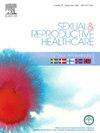Healthcare, socioeconomic and obstetric factors associated with the excess of cesarean sections in 880,000 births from the city of Rio de Janeiro, Brazil
IF 1.7
3区 医学
Q3 PUBLIC, ENVIRONMENTAL & OCCUPATIONAL HEALTH
引用次数: 0
Abstract
Objective
A study conducted in Rio de Janeiro aimed to identify the factors contributing to the high rate of cesarean deliveries in the city, which is over three times higher than the World Health Organization recommended. However, the city has a role in strategies and policies to empower primary care and to organize delivery care.
Methods
We conducted a cross-sectional study using the Live Birth Information System from 2012 to 2021. We chose variables related to healthcare, socioeconomic, and obstetric factors and performed a binary logistic regression to estimate the association between each variable and the type of delivery.
Results
Among 880,182 births that occurred over ten years, we found 54.29 % of cesarean sections. The overall accuracy of the final model was 87.8 %. Although the healthcare, socioeconomic and obstetric dimensions contribute to explaining the excess of cesarean sections, obstetric factors were surprisingly less predictive than variables associated with the context of life and healthcare. The most impressive association was the type of hospital and the occurrence of cesarean sections (OR = 9.81, CI 95 % 9.66–9.97). Compared to the series’s first year, 2021 represented a 26 % lower chance of having a cesarean section in Rio de Janeiro (OR = 0.74, CI 95 % 0.72–0.76), probably due to the implementation of primary care and comprehensive obstetric care policies.
Conclusion
The search for an adequate cesarean section rate requires a delicate balance between maternal-fetal safety, patient autonomy, and ensuring that cesarean sections are not performed excessively without medical justification.
保健、社会经济和产科因素与巴西里约热内卢市88万名新生儿中过多剖宫产有关。
目的:在里约热内卢进行的一项研究旨在查明导致该市剖宫产率高的因素,该市的剖宫产率比世界卫生组织建议的高出三倍多。然而,城市在增强初级保健能力和组织分娩护理的战略和政策方面发挥着作用。方法:采用2012 - 2021年活产信息系统进行横断面研究。我们选择了与医疗保健、社会经济和产科因素相关的变量,并进行了二元逻辑回归来估计每个变量与分娩类型之间的关联。结果:在880182例10年以上新生儿中,剖宫产率为54.29%。最终模型的总体准确率为87.8%。尽管保健、社会经济和产科因素有助于解释剖宫产手术过多的原因,但令人惊讶的是,与生活和保健背景相关的变量相比,产科因素的预测性较低。最令人印象深刻的关联是医院类型和剖宫产的发生(OR = 9.81, CI 95% 9.66-9.97)。与该系列的第一年相比,2021年里约热内卢里约热内卢的剖宫产率降低了26% (OR = 0.74, CI 95% 0.72-0.76),这可能是由于实施了初级保健和综合产科护理政策。结论:寻找适当的剖宫产率需要在母胎安全、患者自主和确保没有医学理由的过度剖宫产之间取得微妙的平衡。
本文章由计算机程序翻译,如有差异,请以英文原文为准。
求助全文
约1分钟内获得全文
求助全文
来源期刊

Sexual & Reproductive Healthcare
PUBLIC, ENVIRONMENTAL & OCCUPATIONAL HEALTH-
CiteScore
2.70
自引率
5.60%
发文量
73
审稿时长
45 days
 求助内容:
求助内容: 应助结果提醒方式:
应助结果提醒方式:


